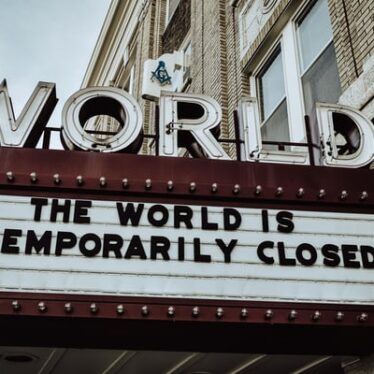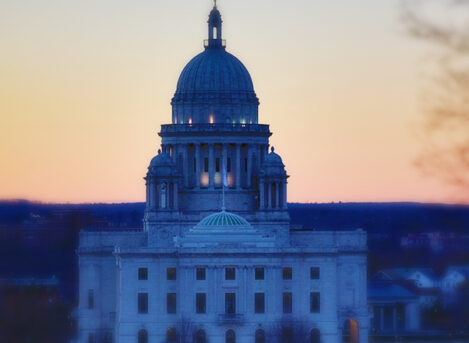Individuals often resort to familiar turns of phrase when asked to describe the events of 2020, and particularly the COVID-19 pandemic. Some call it a catastrophe or a nightmare. Others opt for something more idiomatic—a dumpster fire.[1] Over the last year, civil litigants asked several courts to consider the fitness of one particular description: is COVID-19 a “natural disaster”? In at least three cases, the answer was a vigorous “yes.”
Nine months ago, we published an introduction to the concept of force majeure clauses offering guidance about how courts may apply such provisions to COVID-19-related disputes. (See COVID-19: A Force Majeure Event?). At that time, however, few (if any) courts had actually interpreted force majeure clauses under these circumstances. This post updates on our original guidance.
One of the first courts to wrestle with this question was the Pennsylvania Supreme Court in Friends of Danny DeVito v. Wolf, 227 A.3d 872, 876 (Pa. 2020), cert. denied, 141 S. Ct. 239 (2020). In April 2020, the DeVito petitioners challenged the Pennsylvania governor’s executive order closing all non-life-sustaining businesses to control the virus’ spread. The petitioners’ challenge was a blunderbuss. Among other arguments, they contended that the pandemic was not a “natural disaster” under the state’s Emergency Code because it was not specifically listed as such and was different in “type or kind” from those disasters found in the statute.[2] Their argument relied on the ejusdem generis maxim—a principle applied to interpret general words following specific words as embracing only those objects similar in nature to those specifically enumerated. Put differently: a word’s meaning is determined by the company it keeps.
The Pennsylvania Supreme Court was unpersuaded. “The COVID-19 pandemic is, by all definitions, a natural disaster,” the Court wrote, “and a catastrophe of massive proportions.” The only commonality among the specific disasters listed in the Emergency Code was that they all involved “substantial damage to property, hardship, suffering or possible loss of life.” COVID-19 was accordingly of the “same general nature or class as those specifically enumerated.” The Pennsylvania Supreme Court reaffirmed this conclusion seven months later, albeit in the disparate context of election-related litigation. See Pennsylvania Democratic Party v. Boockvar, 238 A.3d 345, 370 (Pa. 2020) (“We have no hesitation in concluding that the ongoing COVID-19 pandemic equates to a natural disaster.”).
The U.S. District Court for the Southern District of New York relied, in part, on these Pennsylvania rulings when applying a force majeure clause in JN Contemporary Art, LLC v. Phillips Auctioneers LLC, 20cv4370 (DLC), 2020 WL 7405262 (S.D.N.Y. Dec. 16. 2020). In that case, plaintiff entered into two agreements with the defendant concerning the auctioning of two paintings. Defendant sold the first painting immediately; the second painting was scheduled to appear in a May 2020 auction. When COVID-19 struck New York, defendant invoked a force majeure provision to terminate the auction agreement and refused to pay plaintiff the guaranteed minimum price for the second painting. The agreement stated:
In the event that the auction is postponed for circumstances beyond our or your reasonable control, including, without limitation, as a result of natural disaster, fire, flood, general strike, war, armed conflict, terrorist attack or nuclear or chemical contamination, we may terminate this Agreement with immediate effect. In such event, our obligation to make payment of the Guaranteed Minimum shall be null and void and we shall have no other liability to you.
Plaintiff filed suit seeking damages and other relief. In dismissing the action, the district court found “the pandemic and the regulations that accompanied it fall squarely under the ambit of [the agreement’s] force majeure clause.” The district court looked first to the common meaning of the phrase “natural disaster,” which it found “fairly described” COVID-19, stressing that the virus comprised “a worldwide public health crisis that has taken untold lives and upended the world economy.” The DeVito and Boockvar rulings bolstered this conclusion, as did the disaster proclamations issued by New York’s governor. Defendant’s invocation of the force majeure clause thus terminated its obligations to plaintiff.
JN Contemporary Art illustrates not only a court’s close reading of a force majeure clause, but also the iterative nature of our legal system, which refines doctrines by playing out broad principles in specific cases, the outcomes of which in turn guide the analysis of new disputes. Whether other descriptors will be interpreted similarly to the phrase “natural disaster” remains to be determined. Nevertheless, potential litigants can weigh these outcomes when assessing their likelihood of success when invoking (or attacking) a claim of force majeure.
If you would like additional information on this topic or related subjects, please contact Daniel J. Procaccini in the firm’s Litigation Practice.
[1] See Eliza Goren, Shefali S. Kulkarni and Kanyadprocaccini@apslakrit Vongkiatkajorn, “2020 In One Word,” The Washington Post (Dec. 18, 2020). This author prefers the description offered by a 9-year-old from Michigan: “Like looking both ways before crossing the street and then getting hit by a submarine.” Id.
[2] The statute defined a natural disaster as “[a]ny hurricane, tornado, storm, flood, high water, wind-driven water, tidal wave, earthquake, landslide, mudslide, snowstorm, drought, fire, explosion or other catastrophe which results in substantial damage to property, hardship, suffering or possible loss of life.”







